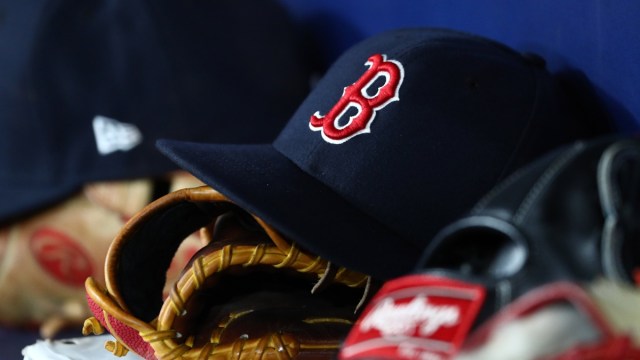Friday was one of those days when Bill Belichick went full-on professor while speaking with reporters.
On Sept. 17, it was a question about long snappers that prompted a 1,500-word soliloquy from the New England Patriots head coach. Friday morning, Belichick offered nearly 800 words on blitz pickups for running backs after a question from Jim McBride of The Boston Globe. He talked for exactly five minutes.
First, watch Belichick deliver the lesson in the video below:
With James White lost for the season due to a hip subluxation, the remaining players in the Patriots backfield must pick up the slack with blitz pickups, an area in which White excelled. J.J. Taylor, for example, is someone primed to fill White’s role in the passing game if he makes the necessary all-around improvements.
Now, if you want, read the full transcript:
Well, there are really three big aspects to blitz pickup, and it’s a very difficult job. The first one is actually blocking the guy. Even though you know who to block, learning the blocking techniques and learning who you’re blocking on a blitz because there are a lot of different blitzers. You could end up blocking a DB, which is more common in sub situations. Although, you could see it any time, or you could block a different type of linebacker. Blocking (Devin) White would be a lot different than blocking (Dont’a) Hightower or somebody like that or (Demario) Davis last week or whoever. So, blocking them, that’s one problem. The second problem is figuring out whether they’re blitzing or not. So, linebackers will try to make it look like they’re blitzing to keep you from getting out in the pass pattern, and as a back, you have to recognize if he’s blitzing, then you got to block him. If he’s not blitzing and he’s just trying to keep you in, then you want to get out so you can be part of the passing game and also take him out of the way of the pocket and the quarterback and the offensive line and everything and clear it out so that it’s more definitive as to who the rushers are and who they aren’t and give the quarterback another option in the passing game rather than be trapped in there blocking a guy who doesn’t have to cover you because you don’t get out in the pattern. Then, of course, the other problem is figuring out who to block, and so depending on what the defense does, there are a lot of offensive systems that give the running back — make him responsible for two players. Sometimes he’s only responsible for one, but if you only make him responsible for one, then if they bring the other guy, if you have six players in protection and they bring a seventh guy, then if you’ve picked the wrong guy to leave free, then he’s running at the quarterback, and that creates a lot of problems. If you give the running back two guys, then you can handle six of the seven blitzers. Not all seven, but if they bring all seven, then the quarterback knows that he’s got to make a decision and get rid of the ball because you only have six blockers, but if they bring six guys out of seven and you can block those six, then that changes everything for the quarterback and so he’s actually got it picked up. So, when you combine all those things with the back and, again, whether it’s with our back or another team’s back, systematically the issues are the same. Figuring out which guy it is that you’re looking for or which two guys maybe you’re looking for depending on the protection scheme is recognizing whether they’re actually blitzing or not or whether they’re just trying to keep you in from getting out into the pattern and then, as I said, when they come, actually blocking them is another story, and then what gets even more difficult for a back is when they run a pick stunt between the linebacker the back’s responsible for and a lineman, a defensive lineman, that the offensive lineman is responsible for, so instead of linemen working together on games, now you involve the back working together on a pick stunt or a game with an offensive lineman, and that gets, I’d say, a little more difficult. Those are the things that a good back and a blitz pickup in the passing game can do, and a lot of that doesn’t happen on first down, play action passes; things like that, but when you get into third down, soft protections, and passing game and all that, every team in the league has to figure out how they’re going to deal with those problems and what they’re going to ask that back to do and all that, so if you free the defense some, that’s easy, but now you only have five blockers or you involve your tight end in the protection or however you want to do it, and again, that’s one way to alleviate some of the back pickup problems, but then it pushes the problems somewhere else, but it is a very underrated part of the back’s job. Especially on third down, the difficulty of the job, it’s significant. You don’t just throw somebody in there and say, well we’ll put this guy in on third down. If you’re going to give him any pass protection assignments, it can be involved.
Class dismissed.






